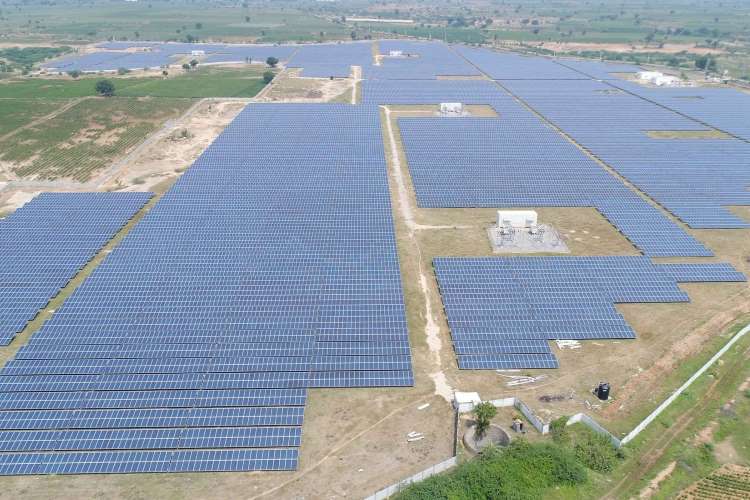Solar energy shift: India is one of the fastest growing regions in terms of electricity consumption. Sadly, the country is still heavily reliant on coal-based generation for power. The government is eagerly looking to switch to green energy at a time when an energy crisis threatens to destroy the European economy.
Recently, India surpassed Italy to become the fifth position in solar power deployment. Solar power capacity in the country has been on the rise with it witnessing more than 11 times jump in the last five years from 2.6 GW in March 2014 to 30 GW in July 2019. Presently, solar tariffs in India are competitive and have even achieved grid parity.
Making best out of waste
India is endowed with vast solar energy potential as a major portion of the country gets direct sun light for most part of the year. And for a country which gets sun in plenty to even cause hundreds of deaths every year due to heatstroke, boosting solar capacity is akin to making best out of waste.
READ | Global payments system: Can India present UPI as alternative to SWIFT
Take for instance Rajasthan where Bhadla Park takes up an area almost the size of some countries in Europe. The area also witnesses 325 sunny days each year, making it perfectly placed for the solar power revolution. Analysts now believe that 10 years from now, Rajatshn is poised to become a solar state as the government continues to woo private investments into the sector.
About 5,000 trillion kWh energy per year is incident over India’s land area with most parts receiving 4-7 kWh per sq. m per day. Hence, more than other clean energy initiatives such as wind and water, solar power harnessing is best suited to Indian conditions. Off-grid decentralised and low-temperature applications will be advantageous from a rural electrification perspective as well and in meeting other energy needs and heating and cooling in both rural and urban areas.
There are social benefits to solar energy as well. The switch has benefited millions of people in Indian villages by meeting their cooking, lighting and other energy needs. The social and economic benefits thus include, and are not limited to, reduction in drudgery among rural women and girls engaged in the collection of fuel wood, cooking in smoky kitchens, and employment generation at the village level.
Access to electricity in India’s rural communities can mean access to hospitals and medicines, which is quite literally, the difference between life and death. Nearly 250 million Indians still live without access to electricity which is why the path towards fully realizing renewable energy potential could be a gamechanger.
Boosting solar capacity is also in line with the government’s agenda of sustainable growth while also posing as a solution to meet the nation’s energy needs. The same is pertinent to a country which is one of the most vulnerable nations to the climate change.
Government schemes to boost solar energy sector
Currently, various schemes are in place with differing completion targets and they together look to boost India’s solar energy sector. The new draft National Electricity Policy (NEP) is expected to have a significant impact on the installed solar power capacity by 2030.
The government has also proposed to bring down installed coal capacity. The shift towards solar power fits the umbrella goal of nationally determined contributions (NDCs) under which India aims to increase its installed non-fossil capacity to 50% of the total by 2030.
Prime Minister Narendra Modi had earlier proposed the One Sun One World One Grid (OSOWOG) initiative to introduce a transnational electricity grid that supplies power worldwide. This was floated during the assembly of the International Solar Alliance (ISA) in 2018. OSOWOG aims at providing power to about 140 countries through a common grid that will ensure the transfer of clean and efficient solar power.
The Union cabinet has also recently approved the second tranche of the performance-linked incentive (PLI) scheme on the National programme on High Efficiency Solar PV Modules. The government is eyeing 65GW per annum manufacturing capacity of fully and partially integrated solar PV modules to be installed in the country. This has an outlay of Rs 19,500 crore. The government also hopes to save close to Rs 1.4 lakh crore forex every year.
READ | Accounting and auditing: AI triggers once-in-a-century transition
India also managed to increase its installed solar capacity at an average growth rate of 47% annually between 2016 and 2021. Other sectors were not as robust compared with the solar power sector. Wind power grew at 7% during the period. Nonetheless, India failed to meet its 2022 target of 175GW of installed renewable capacity.
Meanwhile, technology giants such as Amazon are working to increase their clean energy footprint and are making investments in countries such as India. Recently, the Jeff Bezos-founded e-commerce platform announced expansion of its renewable energy investments with a first solar farm in India. The company said that all of its three large-scale projects will be based in Rajasthan, representing 420 megawatts (MW) of clean energy capacity. This is in line with the company’s goal of reducing its carbon footprint.
Getting solar projects off the ground is not a cake walk. It requires the right policies and regulatory framework to overcome the hesitation in adopting new technologies. The path is also obstructed by the non-availability of concessional or derisking instruments to encourage private capital flow.
India has overcome these challenges to a large extent. Institutions such as the World Bank have applauded the country’s efforts towards green energy. In fact, the agency said that the country’s efforts offer key lessons to boost clean energy investments around the world.

